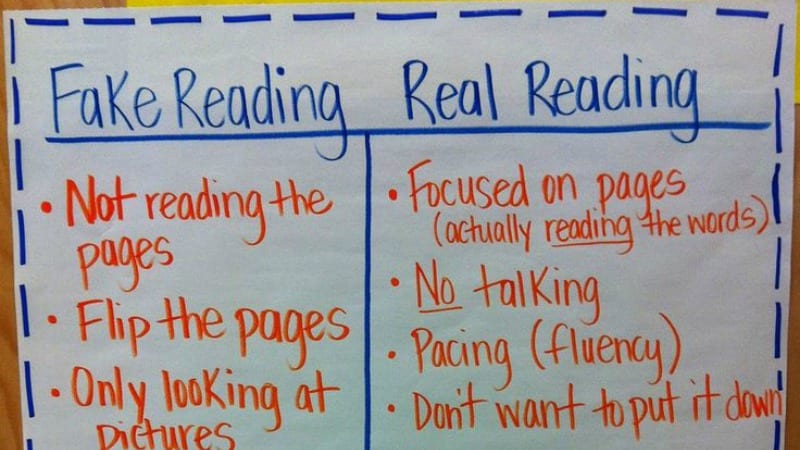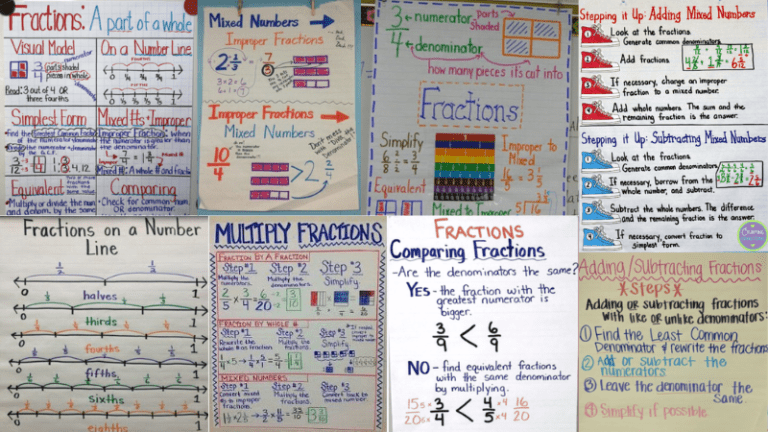Anchor charts are one of the teaching tools that I’ve found to be useful for pretty much any topic that I’m teaching. Whether the anchor chart is teacher-made ahead of time or if it’s made with student input, in the heat of the lesson, anchor charts are a great way to reinforce the concepts we need our students to master.
Here are some of my favorite fourth grade anchor charts:
1. Story plot
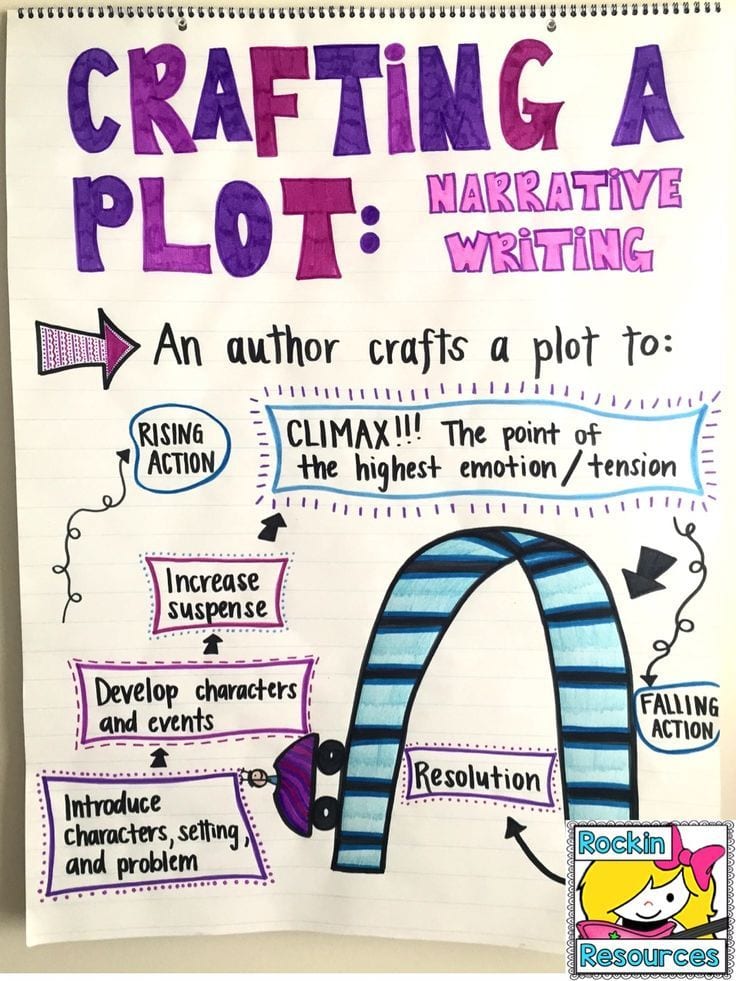
Understanding plots will help students comprehend stories and write narratives more successfully. I love the colors and simplicity of this fourth grade anchor chart from Rockin Resources.
2. Character education
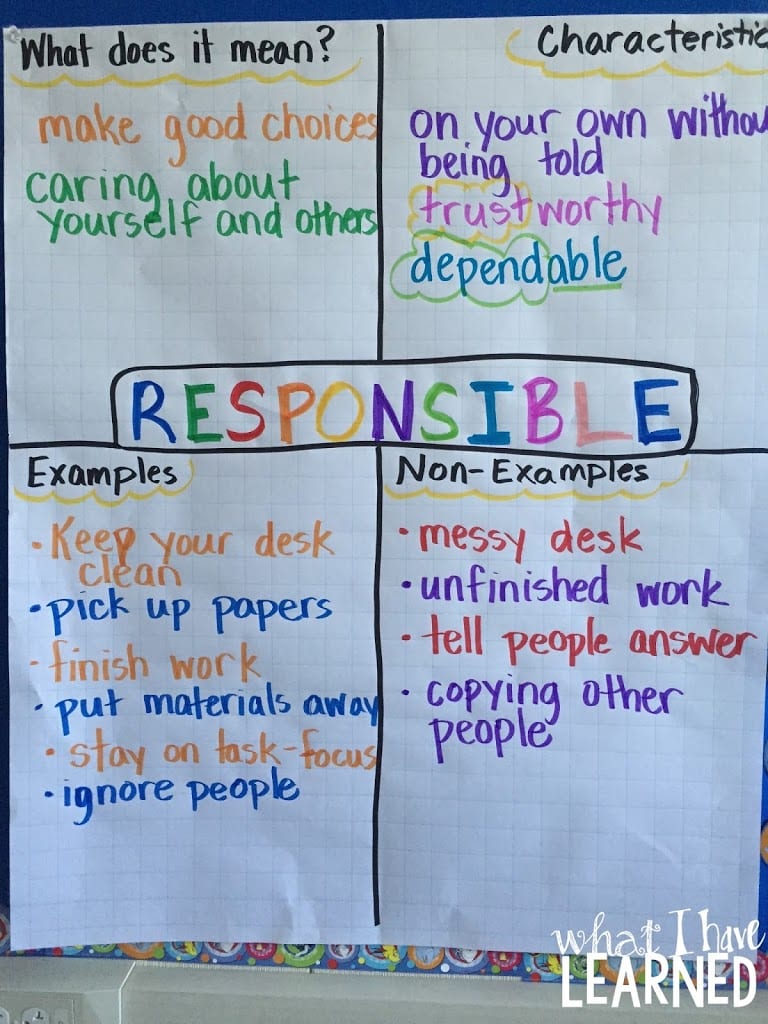
Character ed is a perfect place to incorporate anchor charts. This one, from What I Have Learned, is about responsibility, but each character trait could have its own unique anchor chart.
3. Word problems
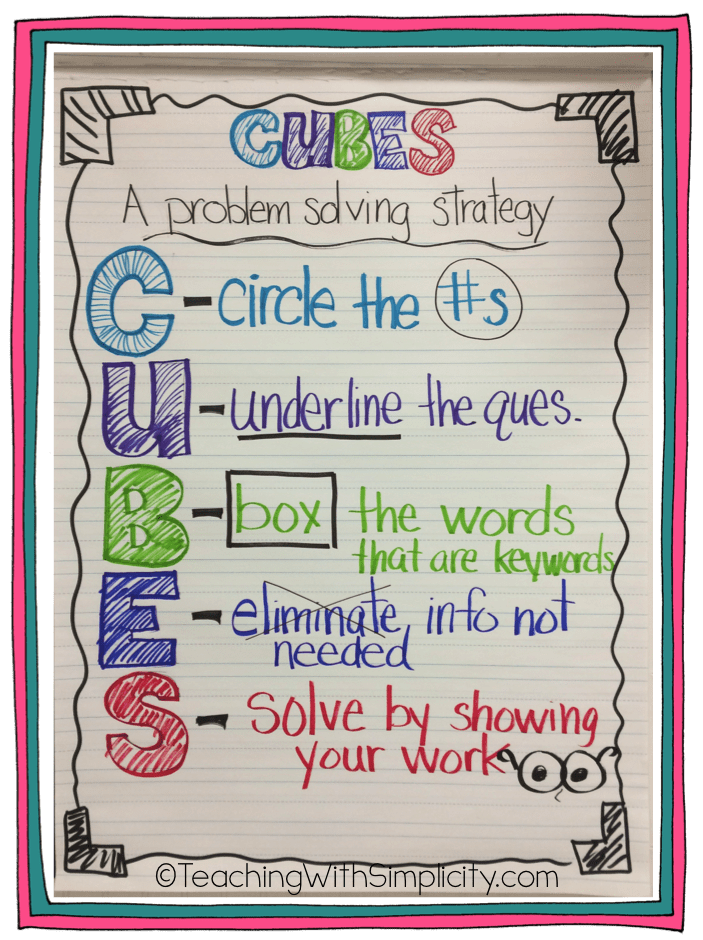
Word problems can be tricky! This CUBES chart from Teaching With Simplicity reminds students of strategies to use to solve a variety of word problems.
4. Prepositions
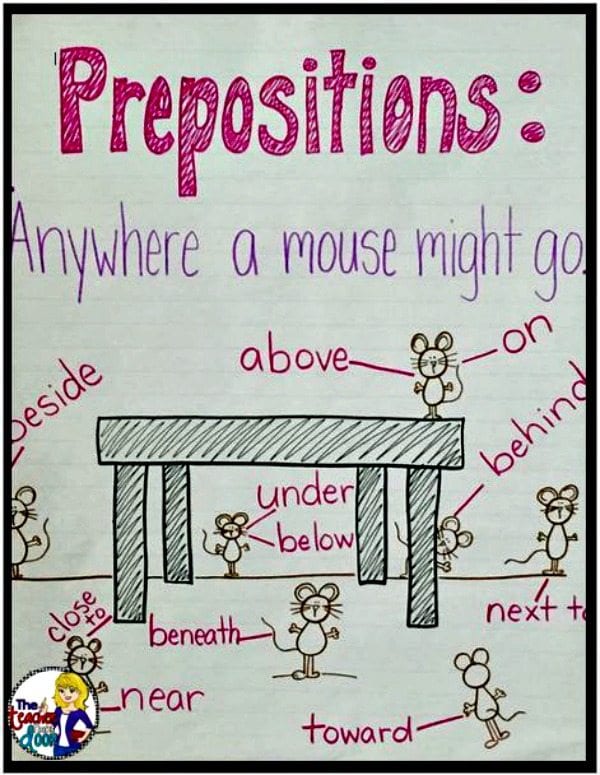
Grammar is a good time for an anchor chart! This one uses mice to help students better understand the meaning of prepositions and comes from The Teacher Next Door.
5. Sentence structure
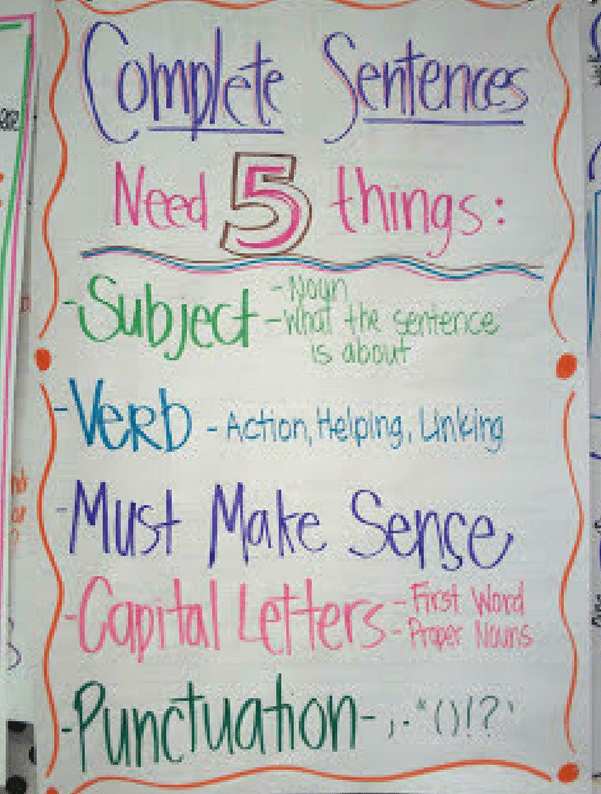
Even in fourth grade, students can use a few reminders about writing good sentences. I would slightly edit this version from Croft’s Classroom to make it clear that the predicate includes the verb.
6. Story elements
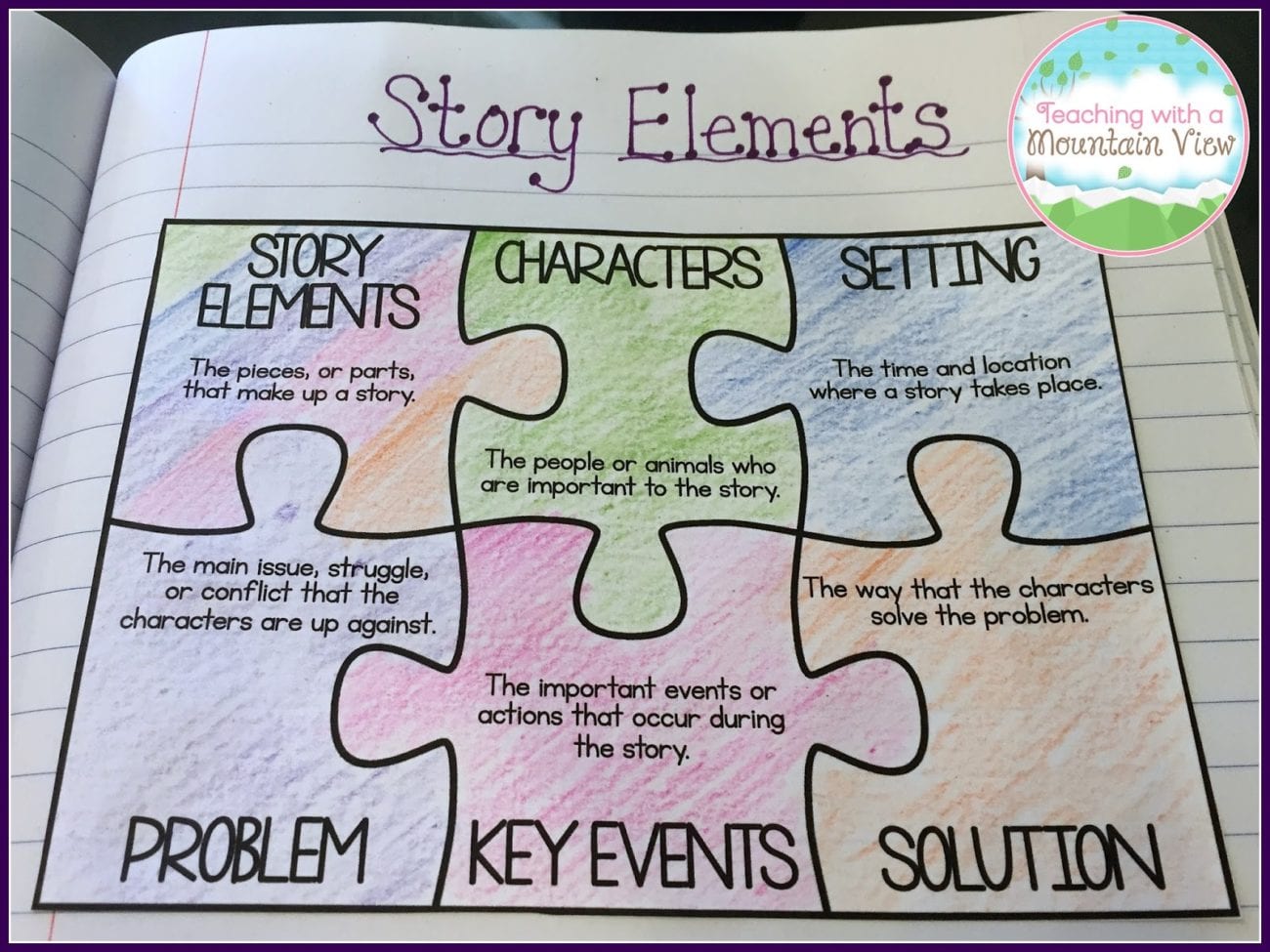
The puzzle pieces on this fourth grade anchor chart help teach about the different elements of a story. It’s a great concept from Teaching with a Mountain View.
7. Speaking and listening skills
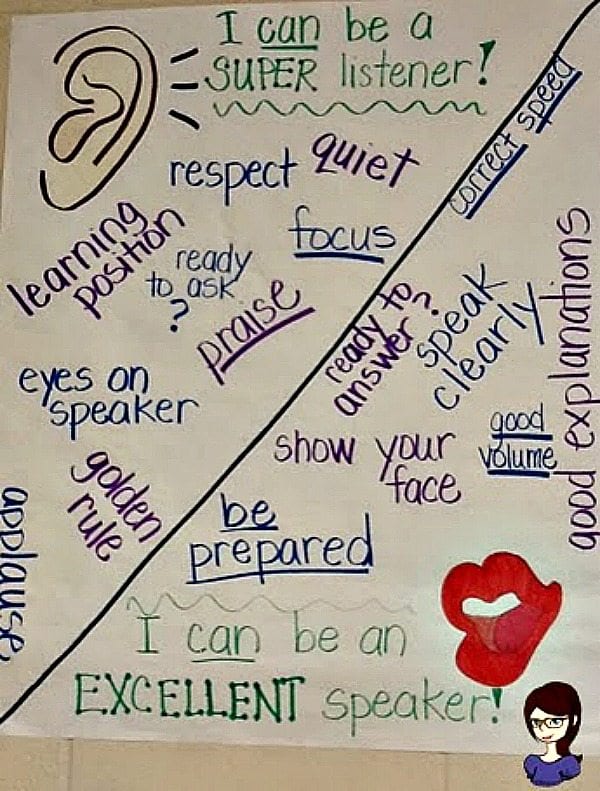
This would be a really helpful chart for a discussion about Accountable Talk. I love how it shows both the listener’s and the speaker’s roles! This anchor chart comes from Owl About Us.
8. Long division

Teaching long division is a rite of passage in fourth grade. This chart’s purpose is to help students remember long division’s sequence. I love how Caffeine Queen Teacher uses sticky notes, so the chart may be used over and over as an example!
9. Classroom expectations
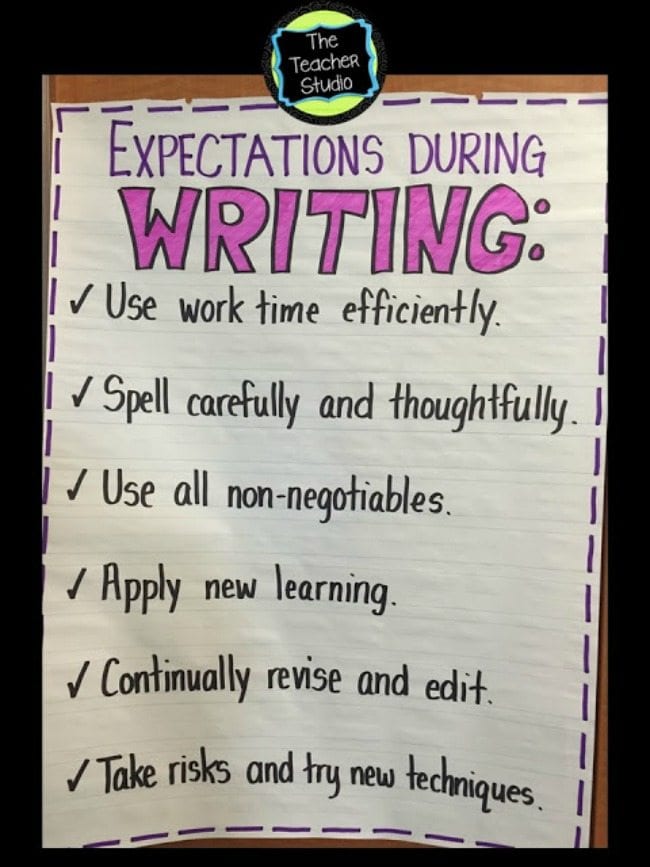
Anchor charts are great for classroom management purposes. This one from The Teacher Studio helps set expectations for writing time.
10. Reading
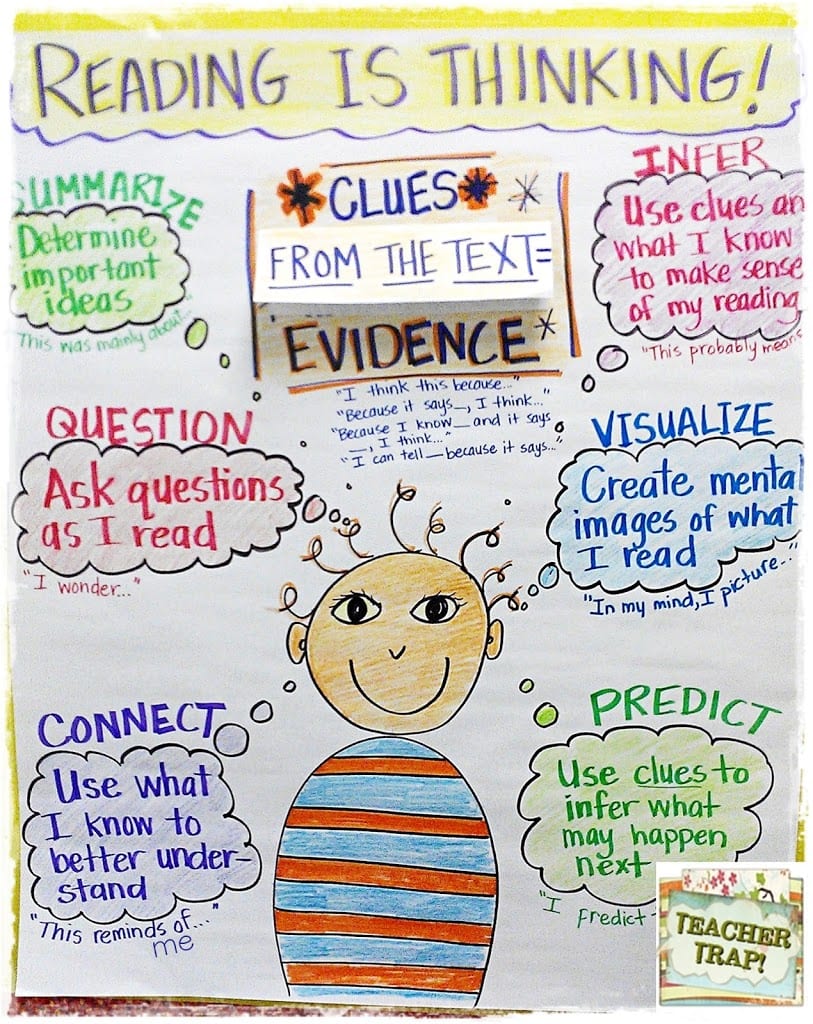
Reading has so many components! This anchor chart from Teacher Trap serves as a great reminder for students about how reading really is thinking.
[contextly_sidebar id=”TB6xOmUdb9P4GInvMOci2sPKZMqn97OS”]
11. Math vocabulary
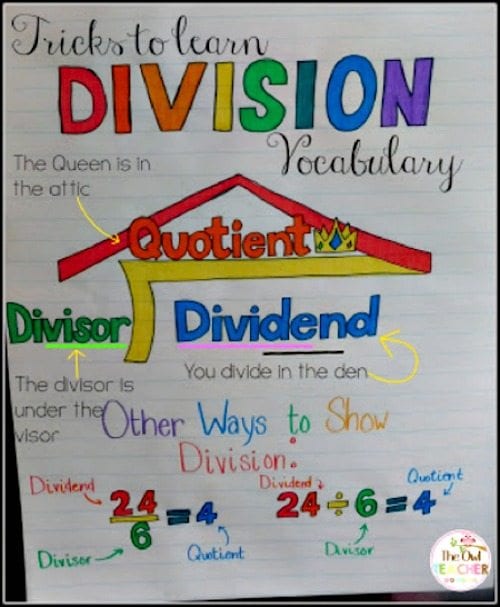
This division anchor chart is a good reference to help increase a student’s math vocabulary. It comes from The Owl Teacher.
12. Fairy tales
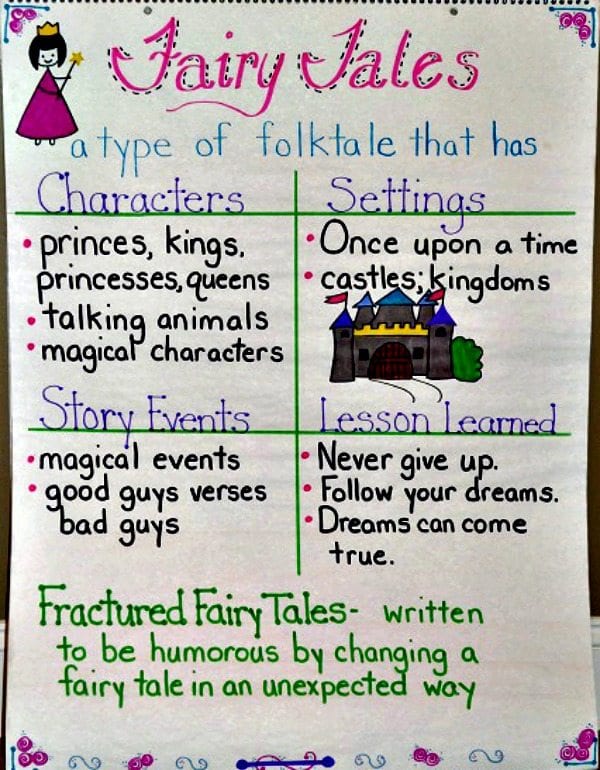
Fourth graders love fairy tales! This anchor chart from Teaching Fourth with Kelly B. helps kids identify the elements of a fairy tale and also helps students write original fairy tales.
13. Compare and contrast story elements
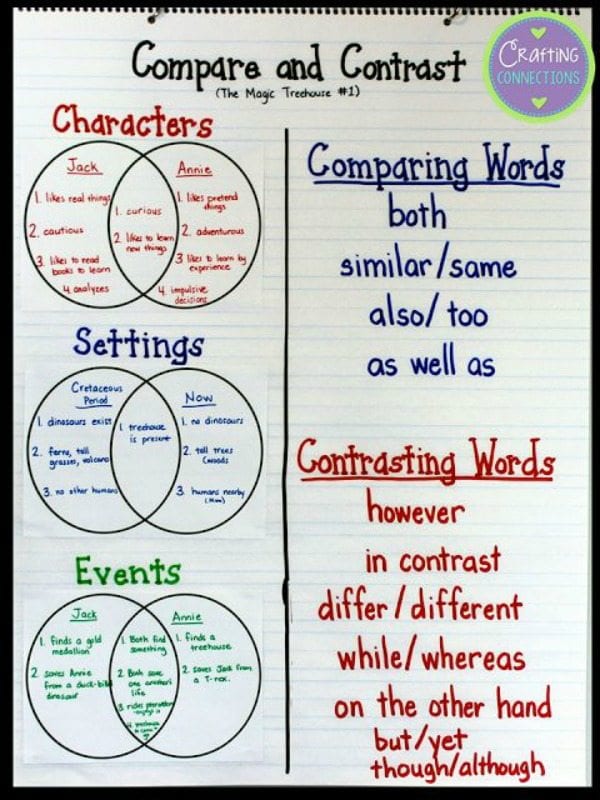
The Venn diagrams on this anchor chart illustrate ways to compare and contrast characters, settings, and events! I also like the examples of keywords which may signal either to compare or to contrast. Thanks to Deb Hanson’s Crafting Connections for this idea.
14. Reading expectations
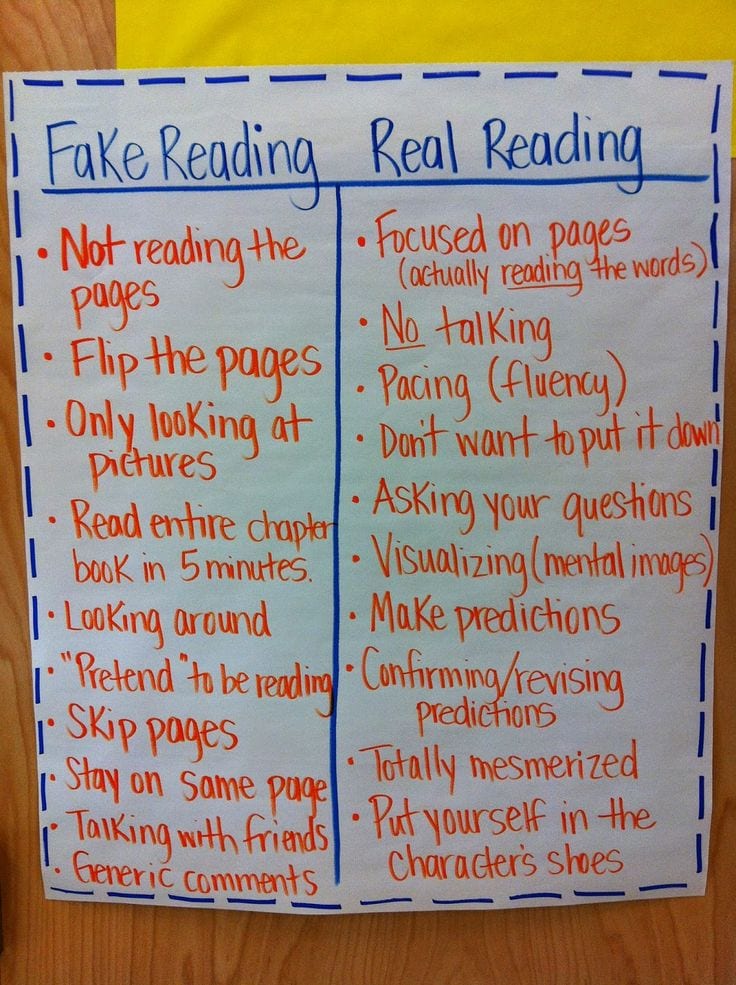
This anchor chart from Head Over Heels for Teaching would make a great mini-lesson for reading at the beginning of the year. A discussion like this could help all of our students to become real readers!
15. Similes and metaphors
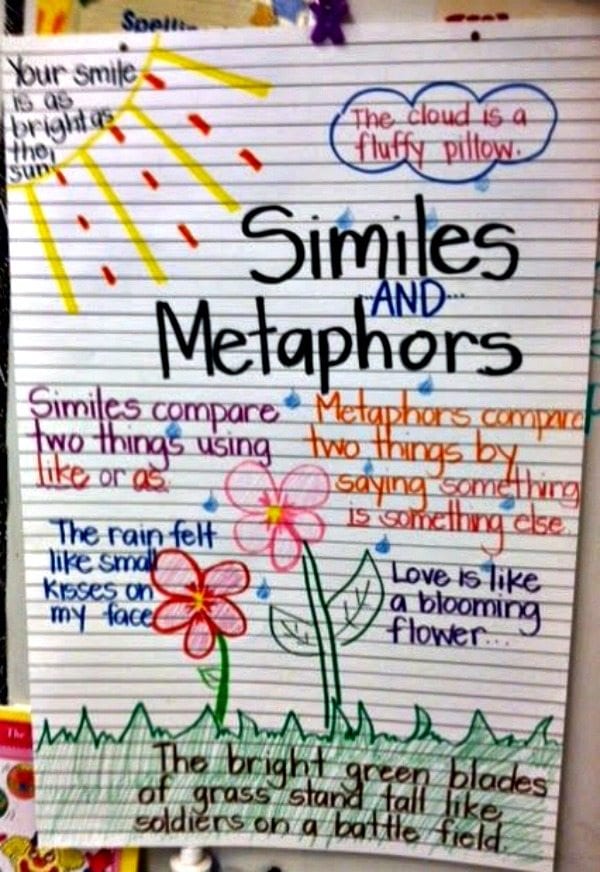
This figurative language anchor chart is so cute but so meaningful! I love the way Teaching in Paradise made the illustrations part of the examples for the lesson.
16. Theme
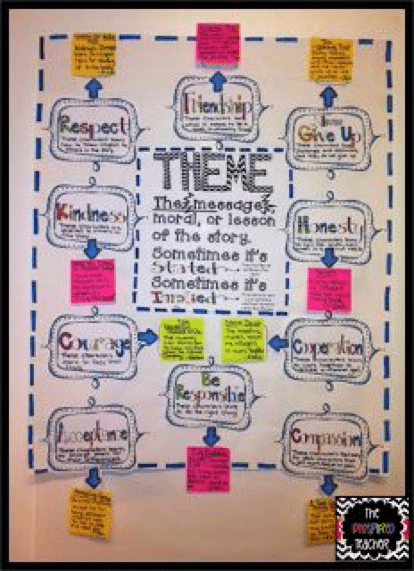
Theme is a challenging concept! I like how this anchor chart from The Pinspired Teacher not only defines theme, but provides lots of good examples. The sticky notes have examples of books with the highlighted theme.
17. Ecology

This fourth grade anchor chart is perfect for Earth Day. I love all the pictures and the examples that were included by A Cupcake for the Teacher.
18. Conflict resolution

Anchor charts work well for social-emotional learning (SEL) and can be incorporated into morning meetings. This chart from Literacy Loves Company is great to leave up as a reminder of all of the different ways kids can solve conflicts.
19. Word choice
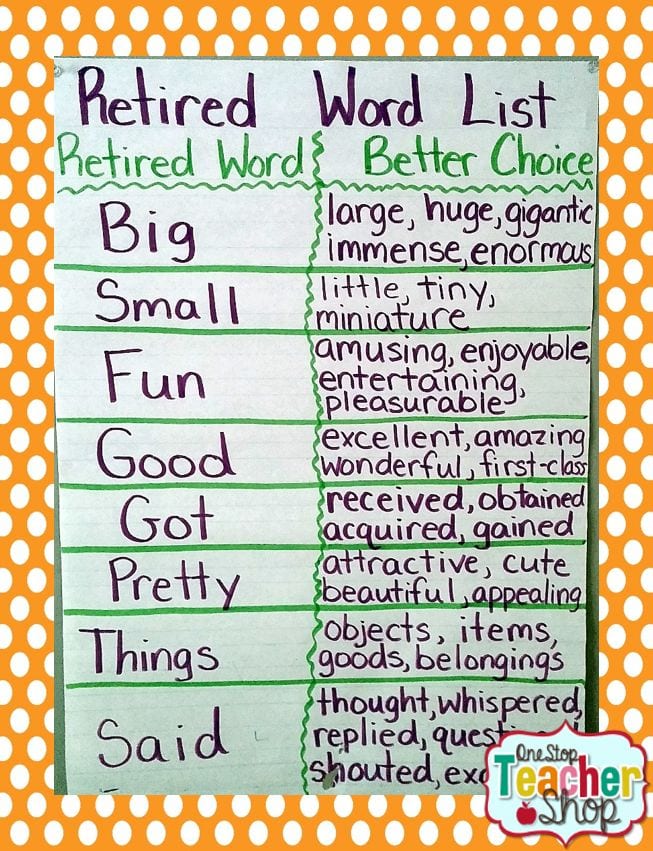
This anchor chart works well with a writing mini-lesson, such as said is dead. I love the way it offers helpful synonyms for overused words. It comes from One Stop Teacher Shop.
20. Earth science
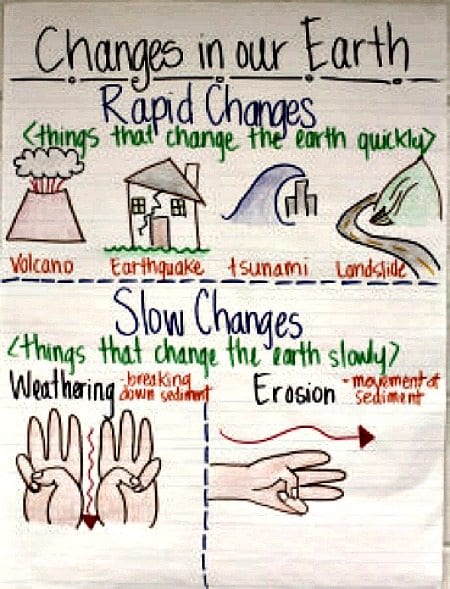
How Earth changes, both rapidly and slowly, is the subject of this anchor chart. I really like the simple but effective illustrations included by Sharpening the Minds.
21. Adverbs
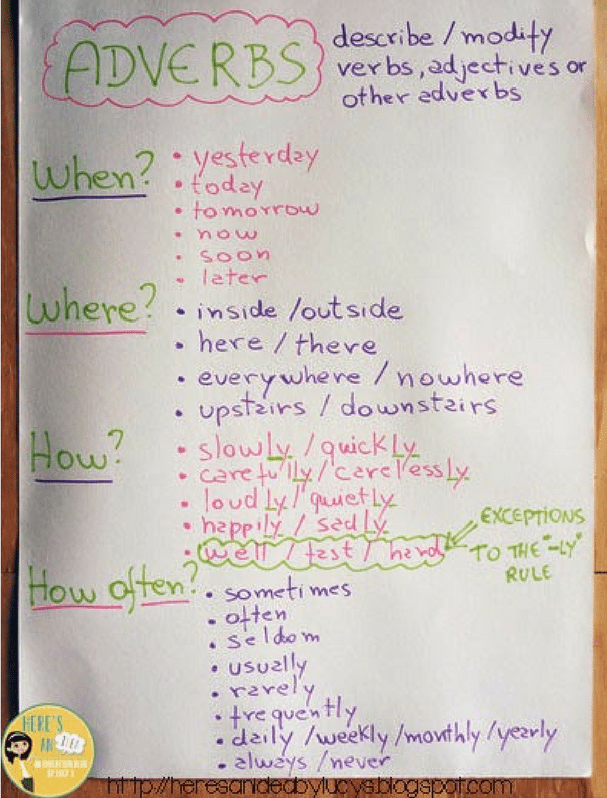
Adverbs can be difficult for kids to grasp. I like how this anchor chart from Here’s an Idea by Lucy breaks them down into different types and also gives examples of each.
22. Area and perimeter
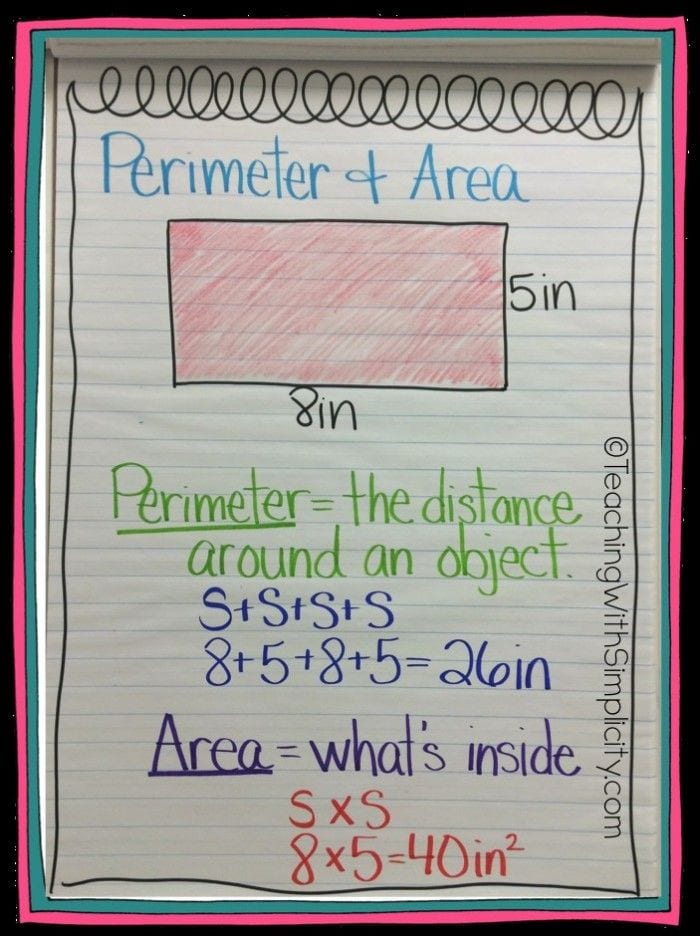
Kids frequently forget the difference between area and perimeter. I like how this anchor chart from Teaching With Simplicity visually shows them the difference and includes formulas and examples.
23. Liquid measurement
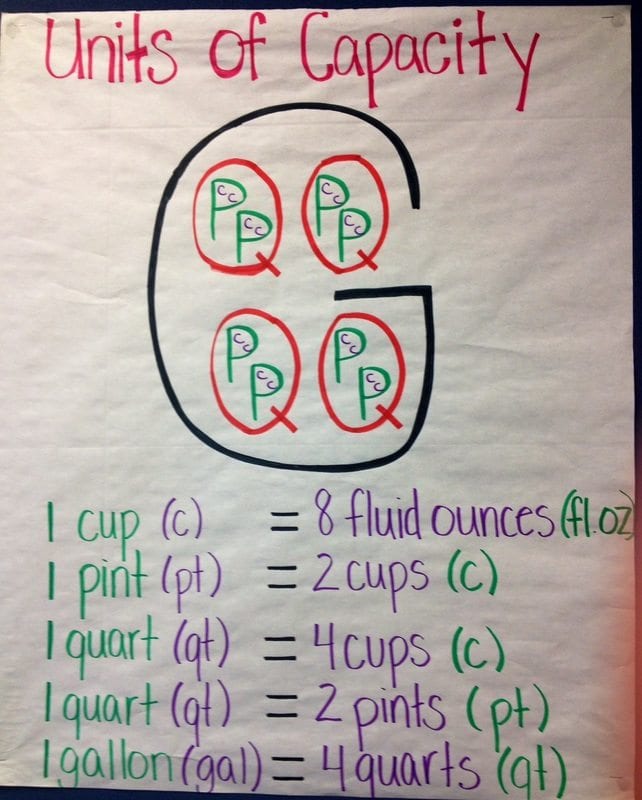
This anchor chart from Fourth Grade Weebly is my favorite way to help students memorize units of capacity: cups, pints, quarts, and gallons.
Do you have a favorite anchor chart that wasn’t included? I’m always looking for new ideas and would love to see a picture if you have one!

